Every winter, Seoul transforms into a magical wonderland during the Seoul Lantern Festival. Held in the heart of the city, this event draws millions of visitors to marvel at the stunning lantern displays and light installations. The festival used to dazzle at Cheonggyecheon Stream, but since 2022, it's found a new home at Gwanghwamun Plaza.
Visitors will be captivated by the intricate designs and glowing sculptures that light up the night. These aren’t just any lanterns; many are crafted from traditional Hanji paper, a popular Korean souvenir showcasing Seoul's rich culture and artistry.
Besides the beautiful lights, a bustling Christmas market, hands-on activities, and a festive atmosphere make it a must-see.Whether you're a local or a tourist, the Seoul Lantern Festival offers a unique way to experience winter in Seoul.
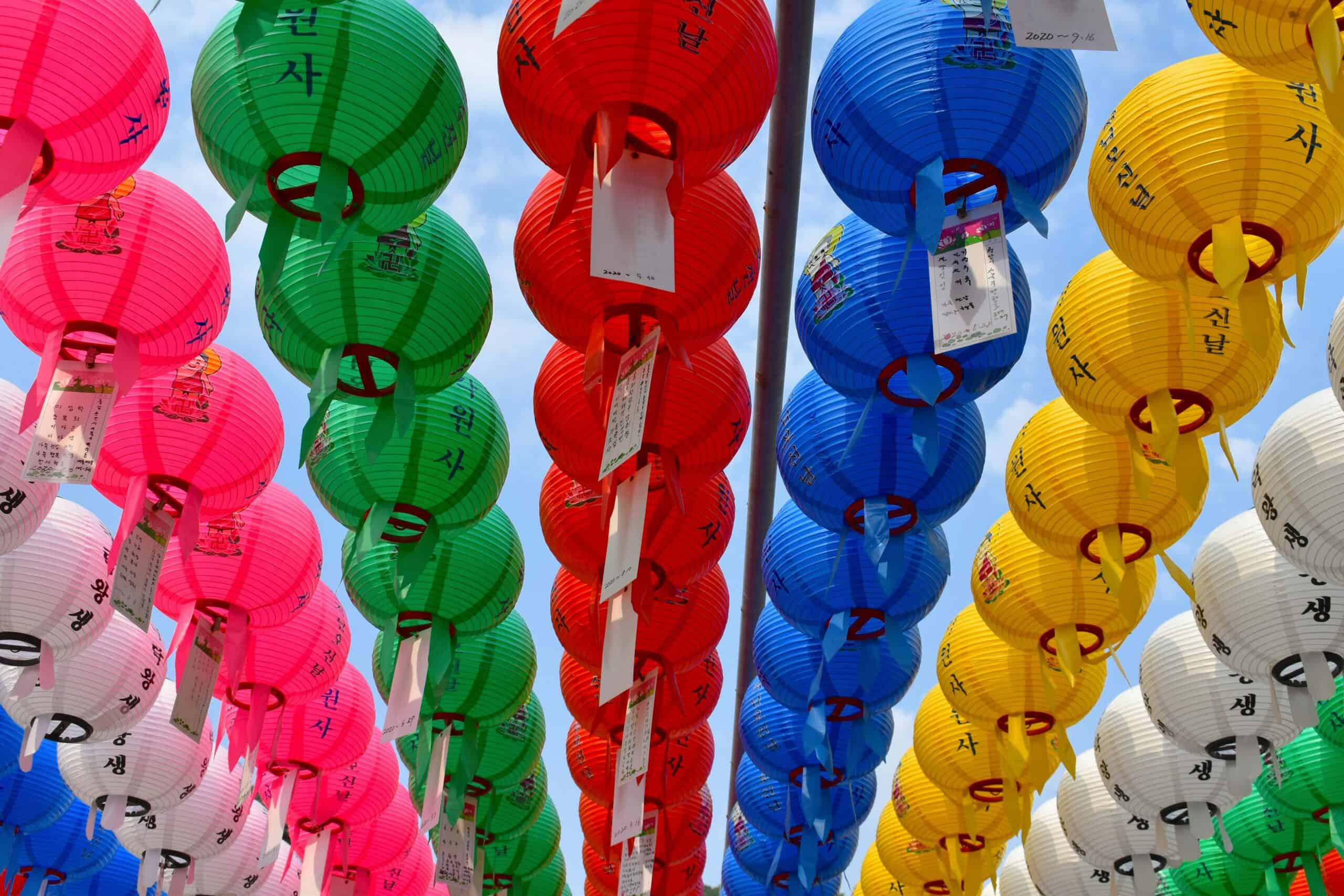
Jump to:
⌛ History and Origin
Joseon Dynasty Roots
The origins of the Seoul Lantern Festival can be traced back to the Joseon Dynasty. During this time, lanterns were used to celebrate events and honor ancestors.
Monks would organize lantern parades to mark the birth of Buddha, a practice that became known as the Lotus Lantern Festival, and a tradition brought communities together and lit up the streets with colorful displays.
Lanterns were not just decorations. They symbolized hope, enlightenment, and the wish for peace. Many people participated, each holding their own lanterns, turning the streets into a sea of light. This period laid the foundation for what would eventually become the Seoul Lantern Festival.
Evolution into a Cultural Event
In more recent years, the festival has evolved from its religious roots into a broader cultural celebration. Now held annually along the Cheonggyecheon Stream and Gwanghwamun Plaza, the event features elaborate light installations, a Christmas market, and various interactive programs.
One significant change occurred in 2022 when the festival's duration was extended to over a month, starting in December and going into January. This allowed for more extensive displays and greater public participation; the festival's transformation reflects Korea's dynamic cultural landscape while still honoring its historical significance.
Today, the Seoul Lantern Festival is a major attraction, drawing visitors worldwide. It serves as a testament to the enduring legacy of lantern traditions and South Korea's cultural richness.
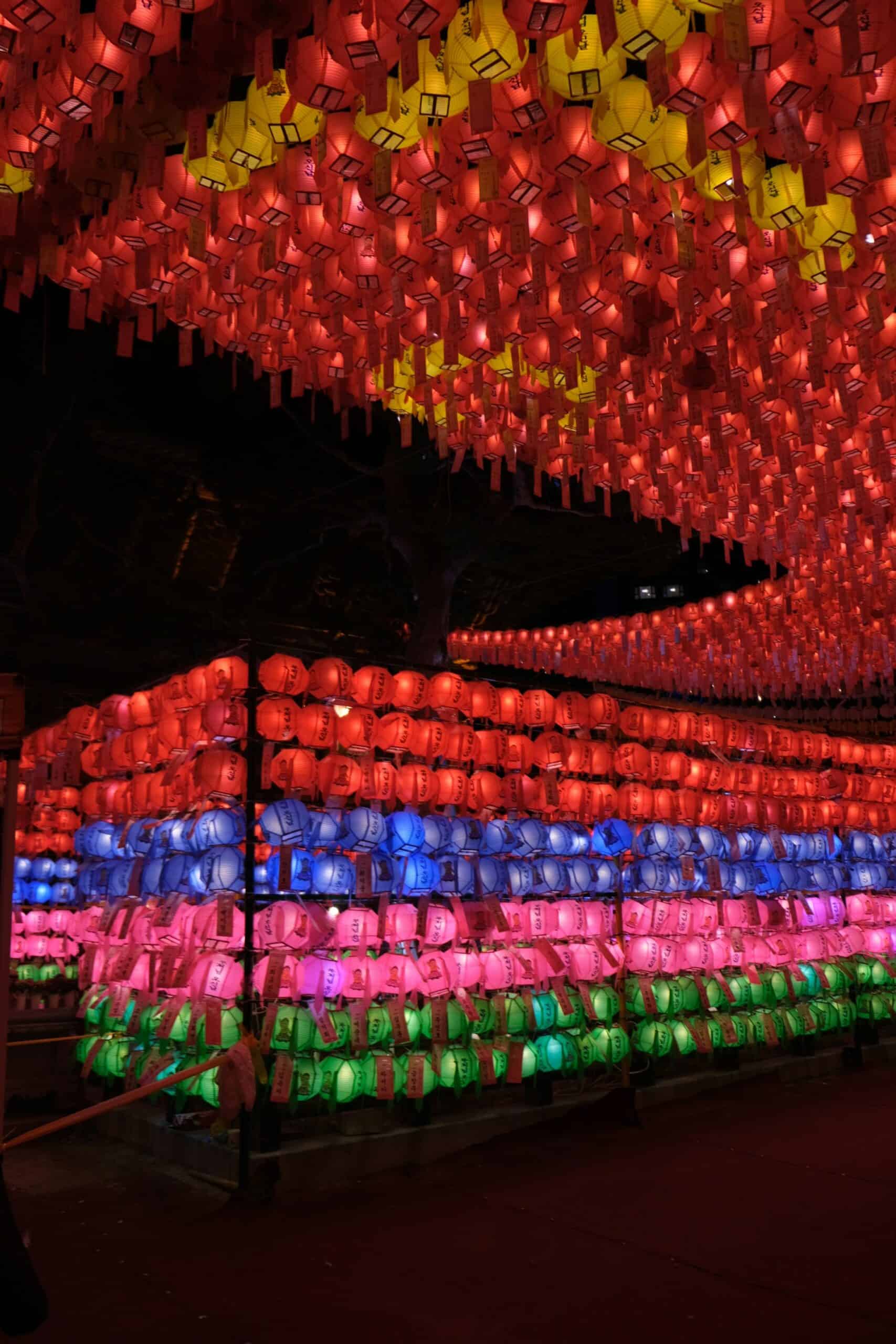
🎊 Festival Highlights
Cheonggyecheon Stream Illuminations
During the festival, the Cheonggyecheon Stream transforms into a mesmerizing path of light. Lanterns crafted from paper and other materials are placed along the stream, creating a breathtaking visual experience.
Visitors can stroll beside the stream and enjoy the lanterns' reflections in the water. Although the themes vary each year, the focus remains on blending Korean culture with modern artistry. Families, including children, find this part of the festival particularly enchanting.
Lantern Parades and Performances
Parades featuring over 100,000 lanterns are a highlight. These parades often start at dusk and continue into the night, moving through downtown Seoul. Each lantern carried in the parade tells a story, often related to Korean history or folklore.
In addition to the parades, performances are held at various locations, including near Jogyesa Temple. These include traditional Korean music and dance, enhancing the festive atmosphere; crowds gather to watch and participate, creating community and shared joy.
Traditional and Modern Lantern Displays
Visitors can admire various lanterns, from traditional designs to contemporary light sculptures. Traditional paper lanterns showcase Korean heritage and craftsmanship, many of which are intricately designed and highlight various aspects of the culture.
Modern displays often incorporate advanced lighting technologies and creative designs. This blend of old and new provides a comprehensive view of Korean artistry, where lanterns range from small hand-held designs to large installations, each unique in beauty and significance.
🤩 The Festival Experience
Food and Vendors
Food and vendors are a big part of the Seoul Lantern Festival. Popular Korean street foods like tteokbokki (spicy rice cakes), hotteok (sweet pancakes), and mandu (dumplings) are available at many stalls.
Local vendors also sell unique crafts and lantern-themed souvenirs - it's a great chance to pick up gifts and support small businesses. The mix of traditional and modern offerings ensures there's something for everyone.
Interactive Activities
There are plenty of interactive activities to enjoy. Workshops where you can make your own lantern are very popular with kids and adults alike, while live performances and parades featuring traditional Korean music and dance keep the energy high. Crowds often gather to watch these shows, capturing the lively spirit of the festival.
Participants can also participate in ceremonies that include lighting lanterns and floating them down the Cheonggyecheon Stream, a serene experience that adds to the festival's charm.
Photography Opportunities
The festival offers endless photography opportunities. The illuminated lanterns create stunning backdrops for both amateur and professional photographers. Visitors can capture dramatic night shots along the Cheonggyecheon Stream and at Gwanghwamun Plaza.
Many displays tell stories or depict cultural scenes, creating interesting and unique photos. You'll definitely want to share photos on social media, showcasing the beauty of the lanterns and the larger displays.
Special photo zones are set up throughout the festival where visitors can take selfies and group photos. These zones are designed to highlight specific themes or intricate lantern designs, ensuring everyone leaves with memorable experiences - and pictures.
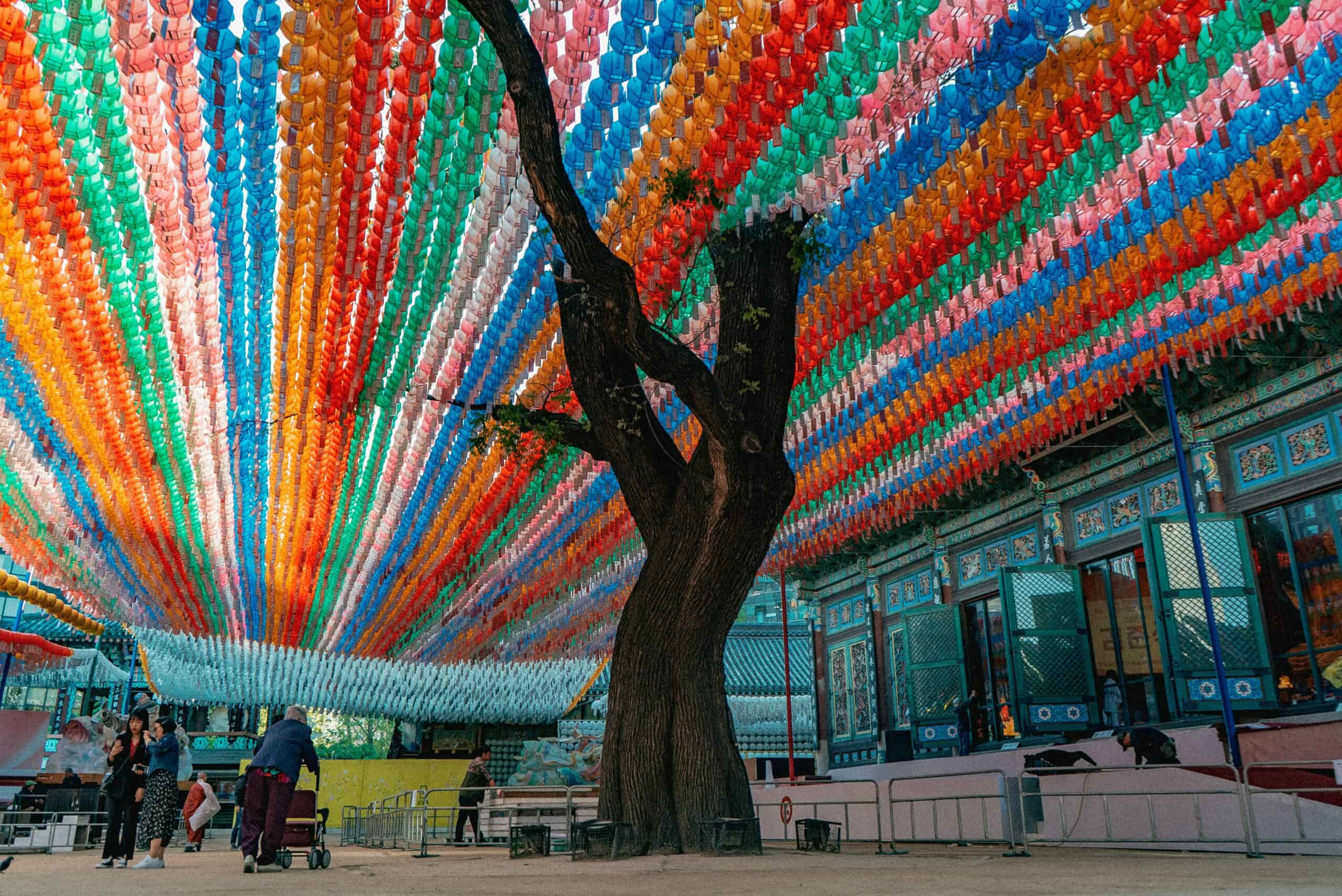
📝 Plan Your Visit
Best Time to Visit
To catch the lanterns at their most beautiful, plan to visit between 6 pm to 10 pm. The best views are in the early evening when the glow of the lanterns contrasts with the darkening sky.
Weekdays are less crowded, giving you a more peaceful experience. November is popular since the festival typically happens around this time and extends into January. Popular spots include Gwanghwamun Square and Seoul Plaza, which offer expansive views of the lantern displays.
Transportation and Accessibility
Seoul metro and other public transportation is user-friendly, especially around the festival areas; nearby subway stations like Jonggak Station, Jongno 3-ga, and Seoul City Hall provide easy access. Walking from these stations will put you right in the heart of the lantern displays in Downtown Seoul.
Buses and taxis are also convenient options. The main festival areas are designed to be accessible to those with mobility issues. Roads and pathways are generally smooth, and plenty of spots have good visibility, even for those who need special accommodations.
📜 Cultural Significance
Influence on Korean Culture
The Seoul Lantern Festival has deep roots in Korean history. It draws inspiration from the ancient Jinju Namgang Yudeng Festival, known for its floating lanterns on the Namgang River. In Korean culture, lanterns symbolize hope, dreams, and remembrance, often used in traditional ceremonies.
During the festival, participants may dress in Korean hanboks, and this traditional attire adds to the event's authentic cultural feel, connecting people to the local heritage.
The vibrant lantern designs also reflect stories from folklore, historical events, and legends. These narratives are vividly brought to life along the Cheonggyecheon Stream, bridging the past and the present in a visual spectacle everyone can enjoy.
Educational Activities for Children
The festival isn't just for adults; it offers many activities specifically for children. Various educational programs teach kids about lantern-making, giving them hands-on experience and teaching them about the history behind these beautiful lights.
Workshops often include crafting mini-lanterns, which participants can take home as souvenirs. Children can also join storytelling sessions where traditional Korean tales are shared. These stories often link to the lanterns displayed, creating a deeper connection for young visitors.
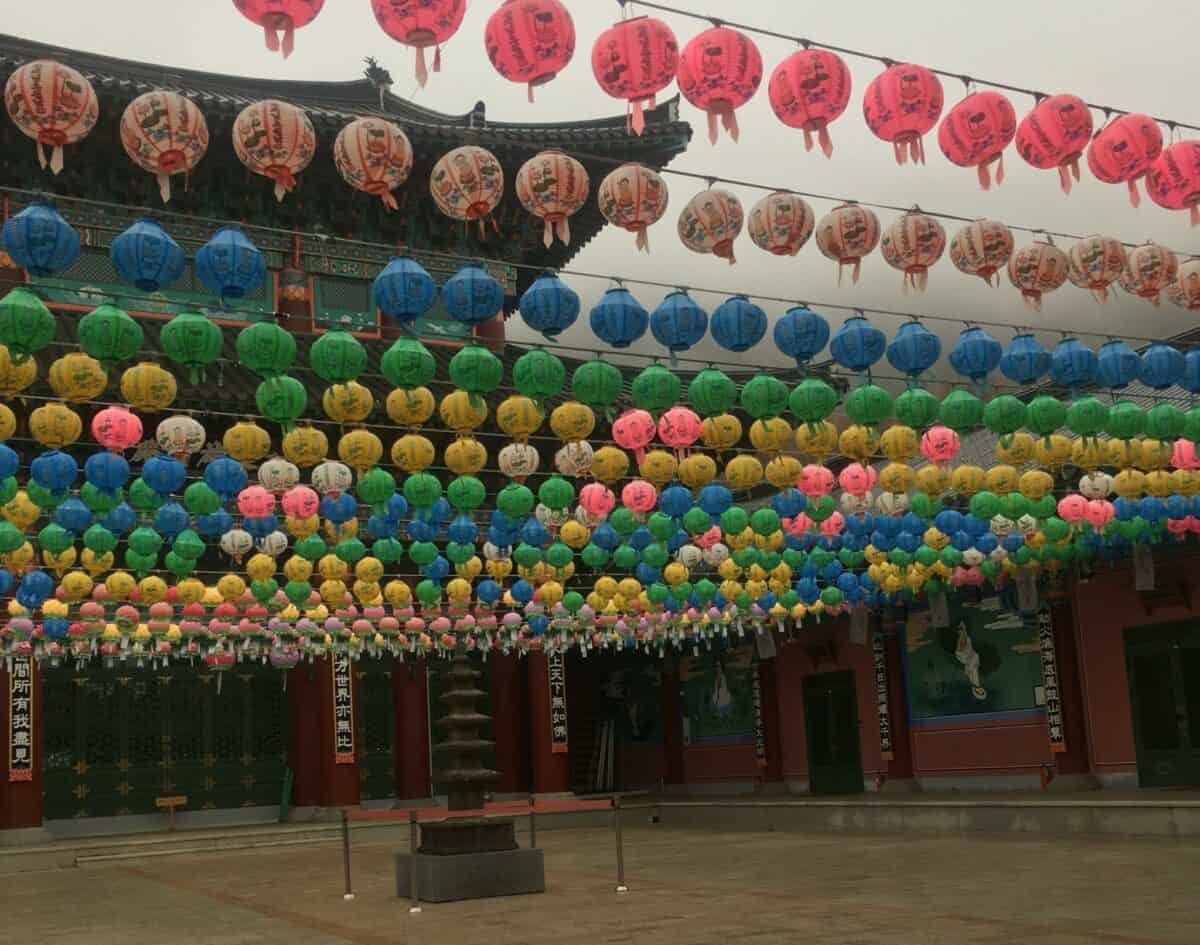
📷 Surrounding Attractions
Nearby Historical Sites
One significant site near the Seoul Lantern Festival is Gyeongbokgung Palace. This grand palace offers a glimpse into Korea's royal history with stunning architecture and serene gardens.
Jogyesa Temple is another nearby attraction known for its beautiful hanji lanterns and peaceful atmosphere. During festivals, the whole area around the temple lights up beautifully.
The tranquil Cheonggyecheon Stream flows near the festival area; it's a restored urban stream perfect for a peaceful stroll and offers various lantern displays during festival times.
Inwangsan Mountain, located a bit further, provides a great hiking experience. The views from the mountain are spectacular, especially when you reach the top and see the whole city.
Shopping and Entertainment
The festival's location near Insadong means visitors can easily access unique shops and traditional Korean crafts. Insadong in particular is famous for its tea houses, art galleries, and antique shops.
Just nearby, the Myeongdong area is bustling with shopping opportunities. From high-end brands to street food stalls, there's something for everyone; it's a lively area, especially during the festival.
The Gwanghwamun Square Christmas Market is a must-visit for those interested in local markets. Open during the winter season, it offers festive goods, delicious treats, and a warm atmosphere perfect for holiday shopping.
Finally, the vibrant neighborhoods around Hongdae offer countless entertainment options. Known for its youthful energy, Hongdae has live music venues, quirky cafes, and a dynamic nightlife scene.
❓ Frequently Asked Questions
The Seoul Lantern Festival takes place in December in Seoul. This change began in 2022, moving from its previous schedule in November. The festival now also spans more than a month, allowing visitors to enjoy the beautiful lanterns for a longer period.
Tickets for the Seoul Lantern Festival can be bought online through various travel sites and official festival websites. Booking early is a good idea since the event attracts many visitors each year, especially on weekends.
The festival features thousands of lanterns, each more intricate than the last. Visitors can expect outdoor light installations, cultural performances, and even a Christmas marketwith pretty much something for everyone, from families to solo travelers.
The Buddhist Lantern Festival, or Lotus Lantern Festival, is culturally significant in Korea. It symbolizes Buddha's enlightenment and wisdom. The celebration includes parades, traditional music, and lantern-making, connecting people to Korea’s spiritual and cultural heritage.

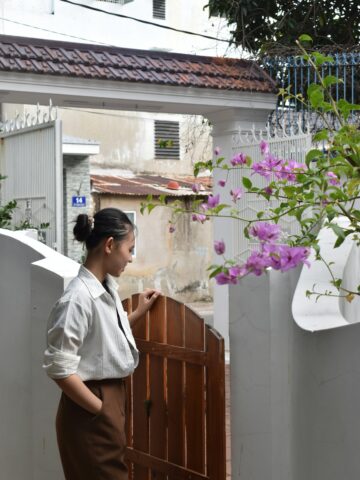
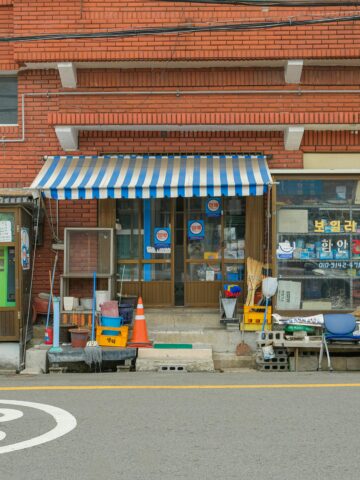
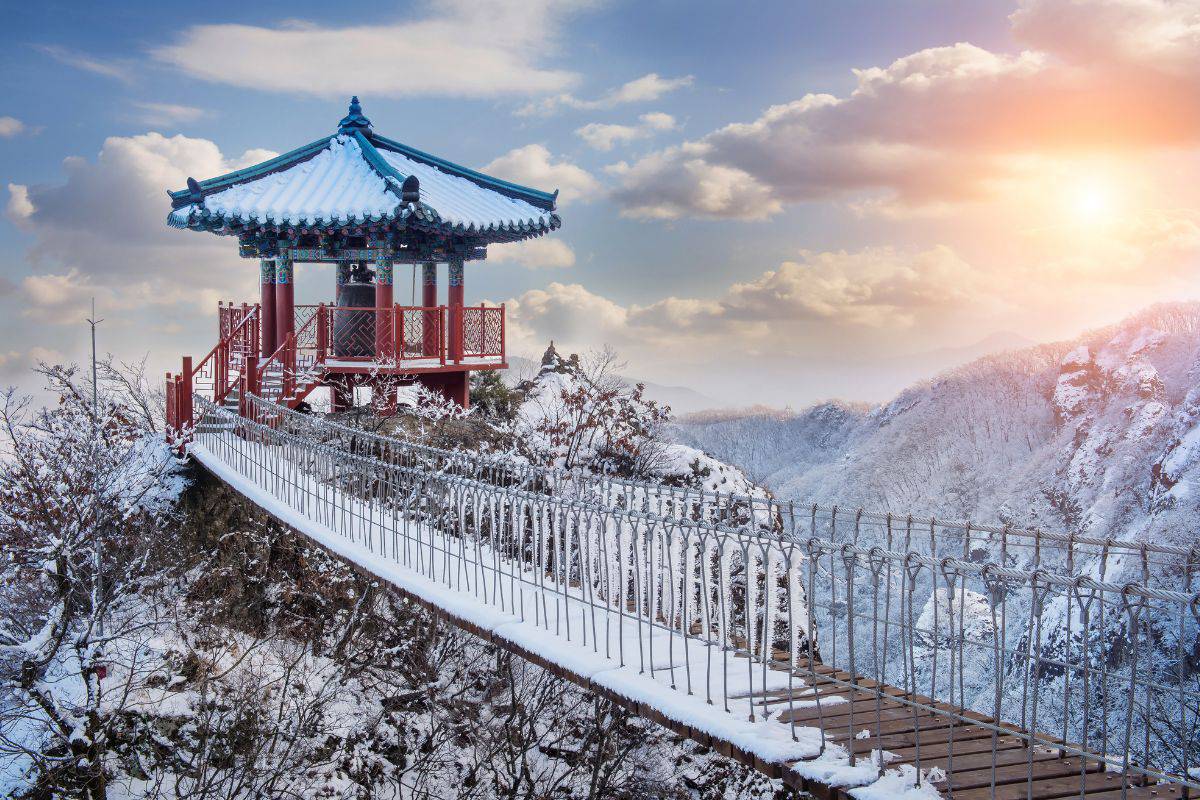
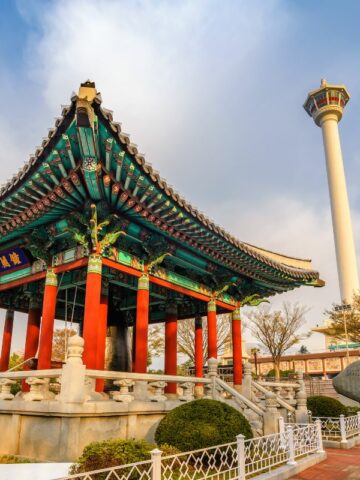
Comments
No Comments